A half century ago, Bendix tested autonomous EVs right where automakers test them today
For much of the 21st century, it seems that the automotive world has focused its attention on two concepts: electrification and autonomous driving. The road to driverless electric cars, however, has recently hit a few potholes. A bit of the bloom has faded from the self-driving rose with the recent shuttering of Argo AI, the autonomous driving startup backed by $2.6 billion of Ford and VW’s money, and Akio Toyoda, head of Toyota, recently claimed that he’s not the only automotive executive who is skeptical about embracing an all-electric future.
Whether or not internal combustion engines and steering wheels will be supplanted by electric motors and artificial intelligence is still an open question. There are apologists and critics making their points on both sides of the issue.
However, the automotive industry, influenced by decisions made in California, Washington, and Brussels, is undoubtedly moving headlong into the electric age, investing billions and billions of dollars, euros, yuan, and yen on battery powered cars and trucks. Originally spurred by Tesla’s introduction of its Autopilot feature, and despite setbacks like the closing of Argo AI, the auto industry continues to spend considerable sums on developing some form of self-driving vehicles, perhaps with more modest goals than full autonomy.
While you might think that working on autonomous EVs is a modern phenomenon, the simple historical fact is that 50 years ago a major tier-one automotive supplier built a dedicated research facility and track specifically for the purpose of testing the feasibility of driverless vehicles, and the vehicles that they tested were powered by electricity, not gasoline.
That vendor was Bendix, then a major supplier of braking systems and other automotive components. The lab and test track the company built on the north side of Ann Arbor, Michigan, was located on a site that coincidentally now houses one of the most up-to-date facilities for developing and testing connected and autonomous vehicles in existence.
The Bendix facility was established to evaluate what was called Personal Rapid Transit (PRT) systems, fostered by the federal government’s creation of the Urban Mass Transit Administration (UMTA, now called the Federal Transit Administration) in 1964. The feds were concerned about the demise of streetcars and passenger railways, leading to increased traffic congestion and emission of pollutants from all that traffic.
It was thought by planners of the era that the collapse of those mass transit systems was at least partially due to their route and scheduling inflexibility, particularly when compared to the personal automobile. In the case of PRTs, the word “personal” didn’t mean individual vehicles but rather that service would be personalized. A passenger would summon a multi-passenger vehicle, which would pick them up and then drive them to the destination station of their choice. UMTA funding either directly or indirectly influenced the creation of still-operating urban rail systems like Detroit’s People Mover and Morgantown, West Virginia’s PRT system, and even more personalized services like Ann Arbor’s own Dial-A-Ride bus system.
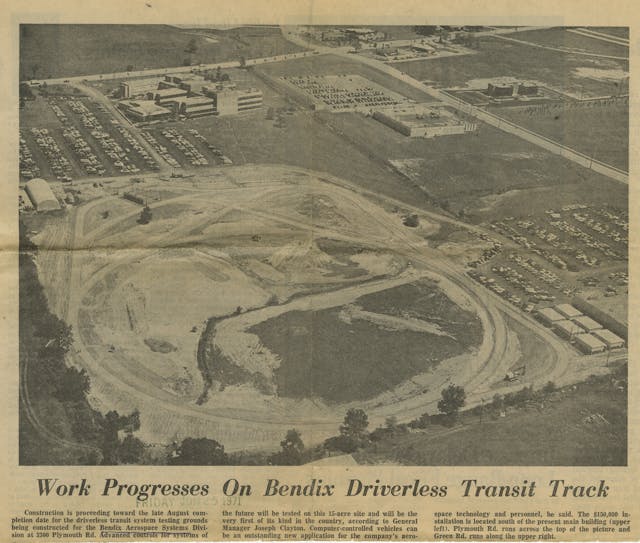
Today Bendix concentrates on truck braking systems as part of Germany’s Knorr-Bremse, but before a series of mergers and acquisitions that have somewhat diluted the Bendix brand, the company was widely diversified, with interests beyond the automotive industry in aviation, consumer and industrial electronics, and computers. In 1958, Bendix Aviation Systems spent $13.5 million ($139 million in 2023 dollars) building a research laboratory on the north side of Ann Arbor, on Plymouth Road just west of Green Road. Other than the lab and Ann Arbor’s nearby water tower, the marshy area remained mostly undeveloped until the University of Michigan started construction about a decade later on its North Campus.
Reflecting the space race, Bendix Aviation was renamed to the Aerospace System Division. Working with Johns Hopkins University’s Applied Physics Laboratory, under funding from the U.S. Department of Transportation, in 1970 Bendix Aerospace started studying “headway sensing systems for automatic vehicles” at the Ann Arbor facility. Both vehicle-mounted and roadside-placed sensors with microwave systems would send information to special-purpose computers that would control vehicle distance and speeds. The vehicles would be capable of carrying freight or up to 15 passengers at speeds of 10–60 mph and would be primarily intended for downtown business districts and airports.

At some point the project was moved to Bendix Corp. Transportation Systems, which began construction of a test track on 15 acres of the north Ann Arbor site, which the company titled the Transportation Controls Laboratory. The installation included a more than mile-long asphalt roadway with banked curves, modest elevation changes, and a 2000-foot inner loop, buried with wires and sensors. An auxiliary building was constructed to house the observation center and computer control equipment. Initial testing began with three small Kalmar delivery vans originally built by Sweden’s DAF, which were converted to electric power by EV pioneer Robert R. Aronson’s Electric Fuel Propulsion Corporation (today Apollo Energy Systems).
Those were apparently among the dozen Kalmars that EPF converted to electric power in 1969 and ’70. Electrons were supplied by EFP’s proprietary “tri-polar” lead cobalt batteries, powering a 20-horsepower motor, which drove the wheels through one of DAF’s variomatic belt drives. EPF claimed a 75 mile range at the vehicle’s top speed of 45 mph.
Bendix’s Transportation Controls Laboratory started operations in November 1971. While we know that the facility used sensors and a computer to control the 20-hp vans, contemporary accounts don’t describe the technology used inside the driverless trucklets.
It’s also not exactly clear why Bendix chose electric vehicles for the testing. Charles Weatherred, director of Bendix’s Transportation System Department, told the Ann Arbor News in 1971, “It really wouldn’t matter what type of vehicle we used on the track (roadway),” because the Transportation Controls Laboratory had “nothing to do with the development of vehicles. It deals in controlling the vehicles on guideways through use of computers.”
In the wake of the 1973 oil embargo, the federal government’s automotive focus turned away from PRT towards fuel economy. Bendix’s interest and investment in driverless technology lasted about as long as the government contracts. Less than four years after the facility was constructed, in October 1974 it was reported that Bendix was thinking of putting the entire 43-acre site on the market. In 1983, the University of Michigan bought the real estate, buildings, and track.

The Bendix Aviation lab was torn down decades ago, but the water tower is still there overlooking the site. If you check the satellite imagery or are not far from Ann Arbor, you can see for yourself that remnants of the Bendix autonomous test track are still extant today. There is grass growing up through the cracks, but much of the asphalt is still intact. When I walked the site, I could see that at least one straightaway and a banked curve still exist and next to the straight there is a circuit box on a post next to the track, possibly part of the original system for controlling the electric vans. From the piles of discarded Hoosier 18x6x10 racing tires, it looks like local dirt track ATV racers may use the site for testing.

As it happens, the water tower still overlooks an autonomous testing facility, though this one was constructed in 2015, not 1971. Immediately adjacent to the remnants of the Bendix test track there is an ersatz little town known as MCity, built by the University’s engineering school with about $10 million of the automotive industry’s dollars. When adjusted for inflation, that’s about six or seven times the $150,000 Bendix reportedly spent on building its Transportation Control Laboratory. The MCity track actually traces part of the route of the Bendix test track.
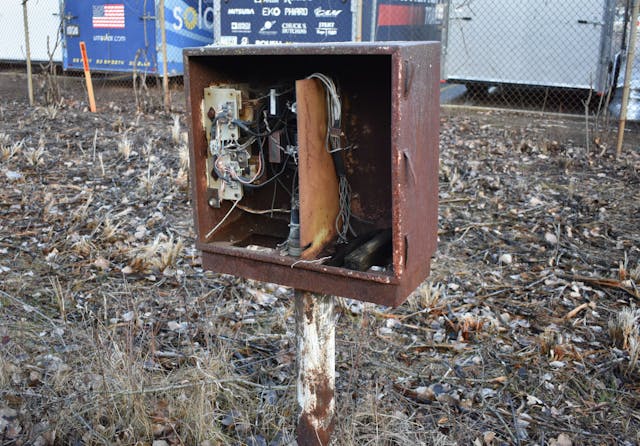
It’s been more than 50 years since Bendix started testing autonomous electric vehicles in Ann Arbor. Once again, autonomous cars—including some EVs, I’m sure—are being tested at the same location. I doubt I’ll be around to see it then, but it will be interesting to see what kind of vehicles may be tested at the Plymouth Road site in another 50 years, what will power them, and who, or what, will be driving them.
***
Check out the Hagerty Media homepage so you don’t miss a single story, or better yet, bookmark it. To get our best stories delivered right to your inbox, subscribe to our newsletters.

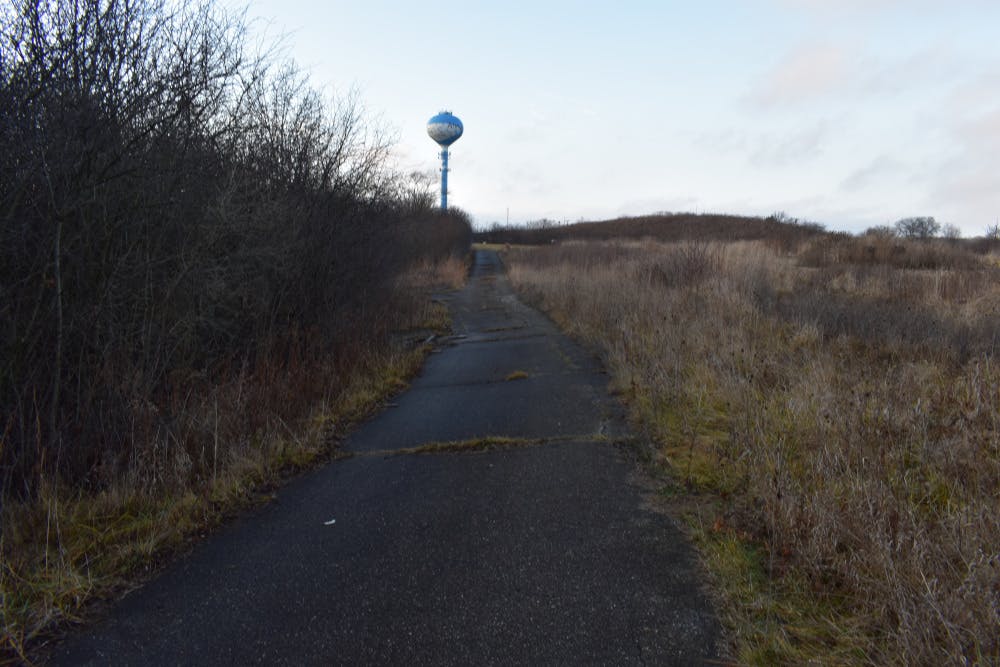
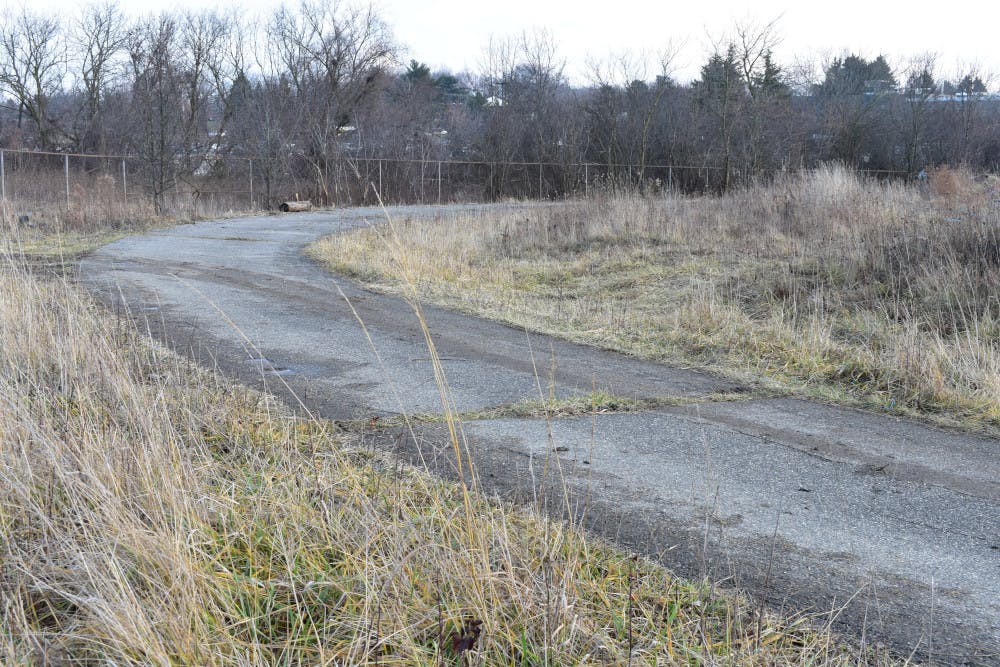

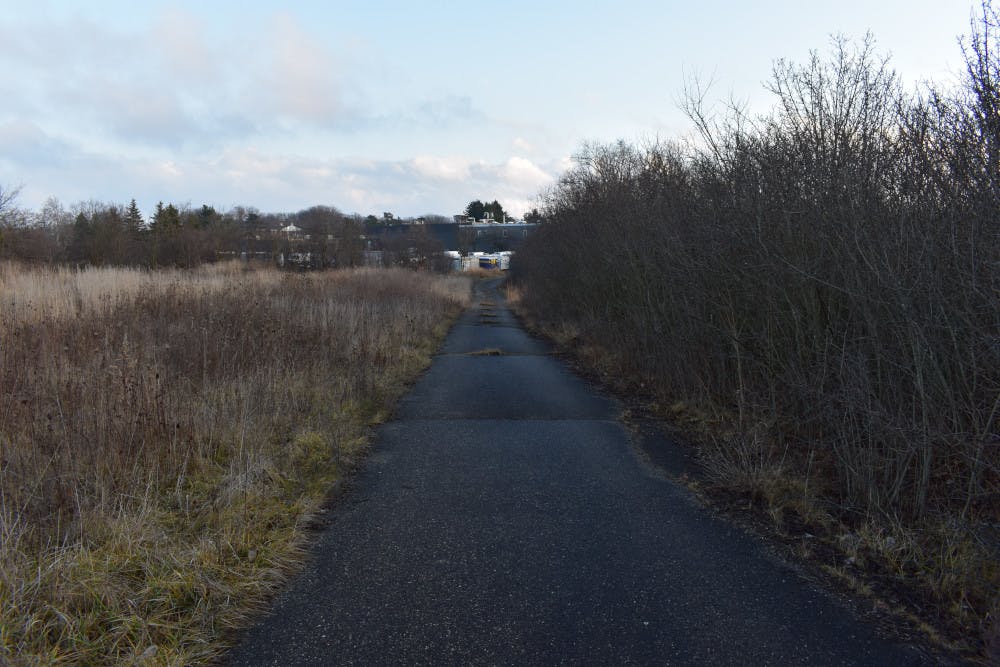
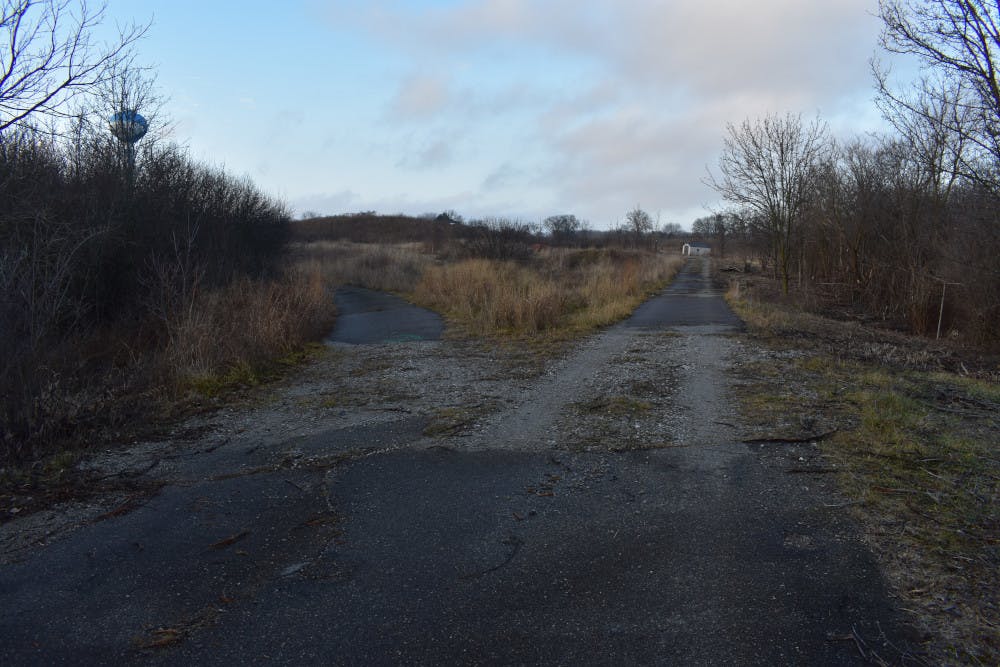



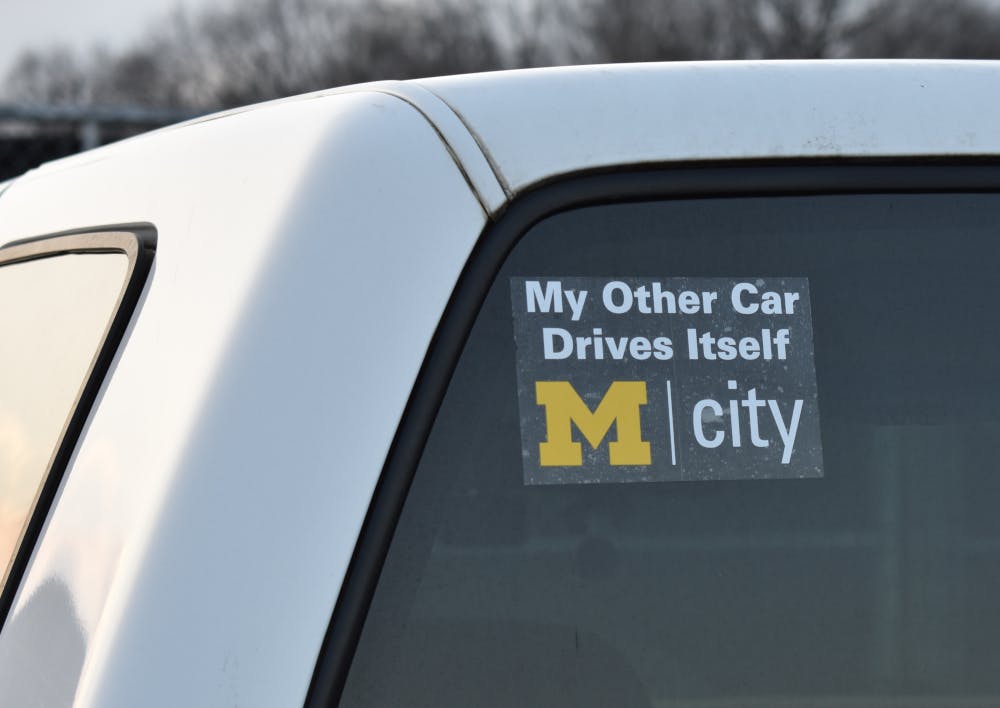


Not sure if it’s still the case, but I think Bendix also owned the the old Studebaker test grounds down by South Bend years ago.
They sure did. Bendix initially singed a 3-year lease for the Studebaker test facility in 1964, then took it over in 1966. A year later, parceling off the more heavily wooded north east corner (which also has the STUDEBAKER living tree sign) and granting it to the county – becoming Bendix Woods County Park. Bendix continued to run the test track site, though their various mergers and acquisitions, until it was sold to Navistar (International Truck and Engine) in 2015. Navistar, now under ownership of VW’s Traton Truck Group, still uses the site.
Correction: Bendix parceled off the north WEST corner of the original Studebaker site.
Looks narrow track at some parts. Would be cool to see it restored.
I don’t know where you get your information, but I was at GM’s Advanced Research and Development Center in the early 2000’s and they were developing Super Cruise there.
Fascinating piece about autonomous driving history. I am familiar with the DARPA challenge for self-driving vehicles in 2004 and 2005, but until this point I was not aware of anything as substantial as the Bendix project of 50 years ago. Very cool.
Check out the May, 1958 edition of Popular Mechanics (coincidentally the month and year of my birth) for an article feature a number of autonomous GM test vehicles.
I live near Ann Arbor and know about M City, but never knew of this history. Thanks for the story.
I have a 1965 Motor Trend Magazine that shows GM working on self driving cars. I have seen a Advertising from GM about self driving cars on Special Roads with a supervisor in a tower.